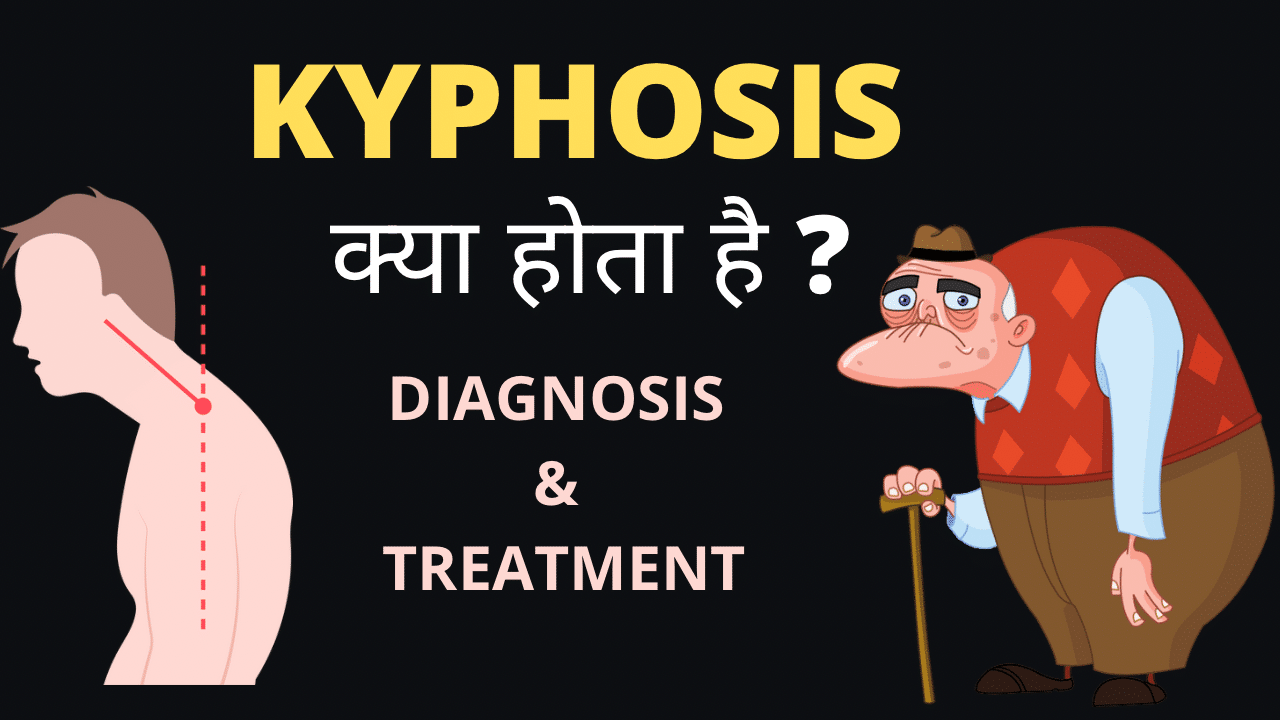What is Kyphosis ?
What is Kyphosis – Kyphosis is a medical condition characterize by an excessive outward curvature of the spine leading to a hunched or rounded back.
The term Kyphosis is often use to refer to an abnormal curvature of the upper spine
specifically the thoracic region although it can also affect the cervical (neck) and lumbar (lower back) regions.
In a healthy spine, there are natural curves that help with stability and flexibility.
The thoracic spine naturally has a slight outward curvature, but when this curvature becomes exaggerated, it results in kyphosis.
The condition can develop at any age although it is more common in older adults due to degenerative changes in the spine.
It can also occur in children and adolescents, which is known as juvenile kyphosis.
There are different types and causes including:
Postural Kyphosis:
This is the most common type and is often seen in adolescents. It is typically a result of poor posture, muscle imbalances, or slouching.
Scheuermann’s Kyphosis:
This type usually develops during adolescence and is characterize by wedging of the vertebrae.
It is thought to be cause by a combination of genetic and environmental factors.
Congenital Kyphosis:
It is present at birth and occurs due to abnormal spinal development in the womb.
Symptoms of Kyphosis
The symptoms of kyphosis can vary depending on the severity and underlying cause.
Mild cases may cause no symptoms or only minor cosmetic issues.
However more severe forms of kyphosis can lead to back pain, stiffness, muscle fatigue and difficulty in breathing if the curvature compresses the lungs or other organs.
Treatment for kyphosis depends on the underlying cause the severity of the curvature and the presence of symptoms.
Mild cases may not require treatment while more severe cases may be cure with physical therapy, exercises to strengthen the core muscles and bracing.
In some cases surgery may be advice to correct the curvature particularly if it is causing severe pain, neurological problems or respiratory difficulties.
If you suspect you or someone you know has kyphosis it is important to consult with a healthcare professional for an accurate diagnosis and appropriate treatment options.
Diagnosis
The diagnosis of kyphosis typically involves a combination of medical history assessment, physical examination and imaging studies.
Here are the steps typically involved in diagnosing kyphosis:
Medical History:
Your healthcare provider will ask you about your symptoms, when they started and any factors that may have contributed to the development of the condition.
They will also inquire about any past medical conditions or surgeries that may be relevant.
Physical Examination:
During the physical examination the healthcare provider will assess your posture, range of motion, and the curvature of your spine.
They may ask you to bend forward to evaluate the flexibility and extent of the curvature.
They may also measure the angle of the curvature using a specialized tool called a scoliometer.
Imaging Studies:
X-rays are commonly use to confirm the presence of kyphosis and determine the severity.
X-rays provide detailed images of the spine allowing the healthcare provider to measure the angle of the curvature and identify any abnormalities in the vertebrae.
In some cases additional imaging tests like magnetic resonance imaging (MRI) or computed tomography (CT) scans
May be advice to evaluate the spinal structures and assess any potential nerve or organ involvement.
Other Tests:
Depending on the suspected cause of kyphosis, your healthcare provider may order additional tests to evaluate specific factors.
For example blood tests may be advice to assess bone health and screen for conditions such as osteoporosis or nutritional deficiencies.
Once the diagnosis will confirmed your healthcare provider will discuss the type and severity of kyphosis.
The underlying cause and appropriate treatment options based on your individual circumstances.
They may refer you to a specialist, such as an orthopedic surgeon or a Physiotherapists for further evaluation and management if necessary
Physiotherapy Treatment
Physiotherapy can play a crucial role in the treatment of kyphosis by helping to improve posture, strengthen muscles, increase flexibility and alleviate pain.
Here are some common physiotherapy treatments that may be utilized:
Posture Correction:
Physiotherapists will focus on correcting posture to reduce the excessive curvature of the spine.
They will educate you on proper body mechanics and provide exercises and techniques
To promote optimal alignment and posture during daily activities.
Strengthening Exercises:
Specific exercises targeting the muscles of the back, abdomen and shoulders can help improve spinal stability and support.
These exercises may include back extensions, core strengthening exercises and exercises that target the muscles responsible for proper posture.
Stretching and Flexibility Exercises:
Stretching exercises can help improve flexibility and range of motion, particularly in the chest, shoulders and hip flexors.
By increasing flexibility, it becomes easier to maintain a more upright posture.
Breathing Exercises:
Some individuals with kyphosis may experience breathing difficulties due to compression of the lungs.
Physiotherapists can teach breathing exercises to optimize lung function and improve respiratory capacity.
Manual Therapy:
Techniques such as joint mobilization and soft tissue mobilization may be employed by physiotherapists
To address muscle imbalances, reduce muscle tension and improve overall spinal alignment.
Postural Bracing:
In certain cases a physiotherapist may recommend the use of braces or supports
to help correct the spinal curvature and provide additional support during activities.
These braces are usually worn for a specific duration under the guidance of a healthcare professional.
Education and Ergonomic Advice:
Physiotherapists can provide guidance on ergonomic adjustments for daily activities, such as sitting, standing, lifting, and using electronic devices.
They can also offer recommendations on appropriate footwear and assistive devices if needed.
It is important to note that the specific physiotherapy treatment plan will depend on the individual’s condition.
A physiotherapist will assess your specific needs and design a personalized treatment program to address your unique situation.
It is recommend to consult with a qualified physiotherapist or healthcare professional
who specializes in spine-related conditions for a comprehensive evaluation and tailored treatment approach.
